
views
Setting Up the Front of the Stove

Remove unusable ash from the front of the stove. Put on a pair of heat resistant gloves and use a fireplace shovel to clear any white pieces of ash away from the front of the stove. Put the ash in a box or bag that you can safely throw away. Be careful while you’re removing the ash, as it can be messy. If the fire is still burning, don’t try to remove ash from anywhere else in the stove. The ash in the middle of the fire can still be very hot and cause the box or bag to burn.
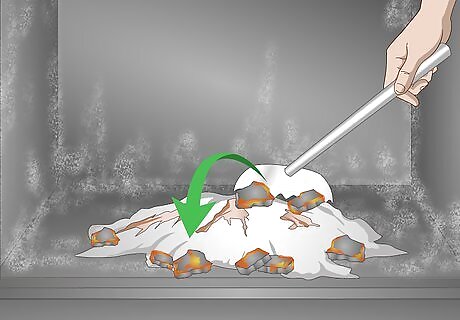
Rake live coals to the front of the stove, near the air inlet. Take a long-handled rake for fireplaces, and reach into the stove. Position the rake on the bottom of the stove, and pull it toward you to move the coals to the front of the stove. The coals should be in a rectangle shape that takes up about half of the stove. Try to keep the coals as close to the door as possible, leaving a clear space in the back of the stove for a new load of logs. Be careful not to pull the hot coals completely out of the stove and onto the ground. If this does happen, use heat resistant gloves to pick up the coal and place it back in the oven.

Add a small amount of kindling if most of the coals are no longer hot. If you’ve let your fire burn for a long time, you might need to reignite it. Place 4-5 pieces of crumpled newspaper on top of the coals to light after you position the logs, which will restart the fire by heating the coals. Keep in mind that if the coals are still hot in some places, the newspaper may catch flame quicker than anticipated.
Positioning and Igniting the Logs

Pick 1 large piece and 2-3 small pieces of oak, hickory, or pine. These types of wood tend to burn slowly and are the best logs for overnight fires. Make sure your large log will fit inside of the stove when laid down horizontally. If you need to, cut larger pieces of wood in half to form smaller pieces for building the fire. If you don’t have oak, hickory, or pine available, you can use any type of wood. However, you may need 2 larger pieces of wood and 4-5 smaller pieces to make a load that will burn overnight.
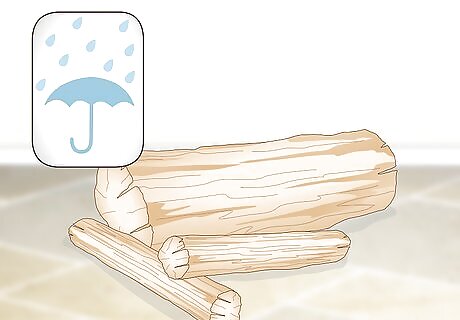
Make sure the logs are dry to ensure a long burn. Look for pieces of wood that are evenly colored and dry when you touch the bark and the ends of the logs. Avoid using wood that has green spots on it. If you want to ensure that your wood is suitably dry, use a moisture meter to ensure that the moisture level is less than 20%. If you don’t have access to wood, consider purchasing dry firewood from a home improvement store or garden center.
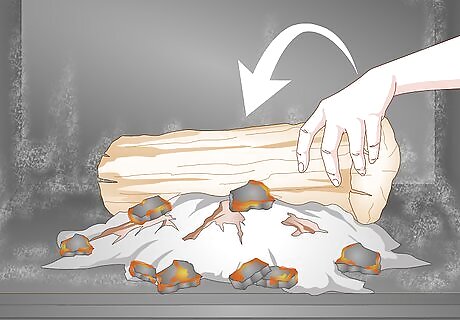
Place the large log in the back of the stove, behind the coals. Position the largest log first, using the shovel, rake, and poker to make sure it is horizontal. Press it against the back of the stove, as far away from the coals as possible. Make sure it is as flat against the bottom of the stove as possible. This will ensure that the largest piece of wood will burn last, providing fuel for the fire throughout the night.

Stack the smaller pieces around the larger log, laying them horizontally. Use the fireplace tools to carefully add the rest of the wood to the stove. Ensure that at least 1 smaller piece of wood is touching the back part of the coals. Make sure the large log is covered on the top and the front by smaller pieces of wood to insulate it from the heat. Don’t try to push any of the smaller pieces of wood behind the large log, as this can cause the larger log to ignite earlier. Make sure the pieces are packed as tightly as possible in the stove to insulate the larger log. Positioning the logs in this manner can result in a fire that burns for 6-8 hours, depending on your stove configuration and the type of logs that you’re using.
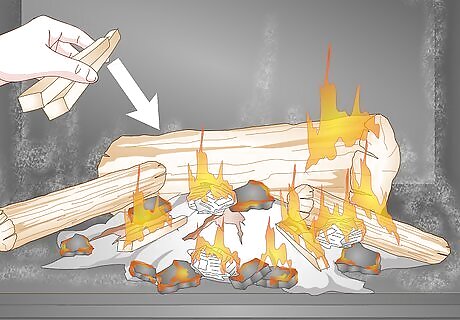
Reignite the fire if you added kindling to the stove. If you had to place newspaper or kindling into the stove because the coals had died, use a lighter to set fire to the papers. Close the door while the newspapers burn down, and watch to make sure the coals begin to turn red. If the coals don’t heat up, add 4-5 more pieces of newspaper and relight it to add more heat to the stove.
Ensuring a Safe Overnight Burn
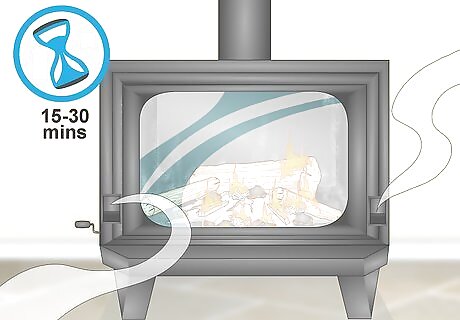
Open the air inlets for 15-30 minutes after adding the load. Turn the lever on the stove that controls the air vents to ensure that it is completely opened. This will add oxygen to the stove to help fuel the fire as it starts, ensuring a strong fire for the night. Don’t leave the stove unattended while the vent is open. Stay in the room to keep an eye on the coals to make sure the coals don’t heat too quickly.
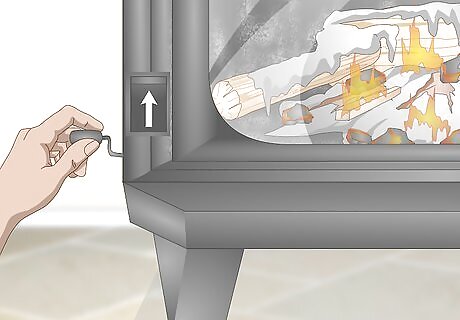
Reduce the airflow when the outer pieces of wood have a thick layer of charcoal. After about 15 minutes of burning the coals, look at the pieces of wood in the back of the stove. They should have a thick black coating around the bark. Then, start closing the air inlet slowly until it is just slightly open. Leaving the vent slightly open will control how quickly the fire can burn overnight because it limits the amount of oxygen available in the stove. Don’t close the air vent all the way. This can smother the fire and cause it to go out completely if the oxygen runs out during the night.

Remove the ashes from the bottom of the stove in the morning. When you wake up in the morning, use the fireplace shovel to gather and dispose of the ash from the wood that burned overnight. This will prepare the stove to safely burn another load during the day or the next night. If you’re not going to be using the stove, remove the ash anyway to prevent it from relighting.

















Comments
0 comment